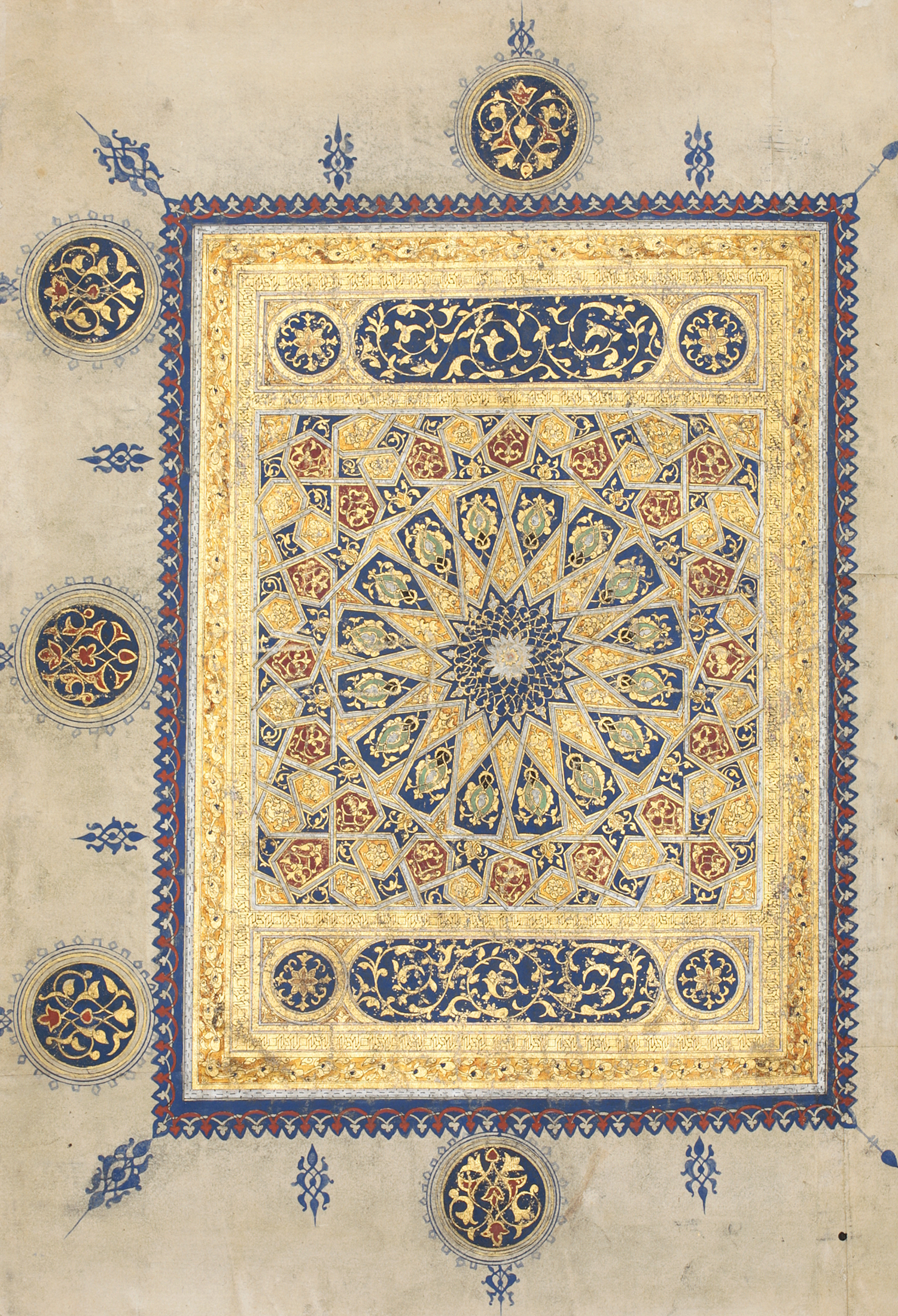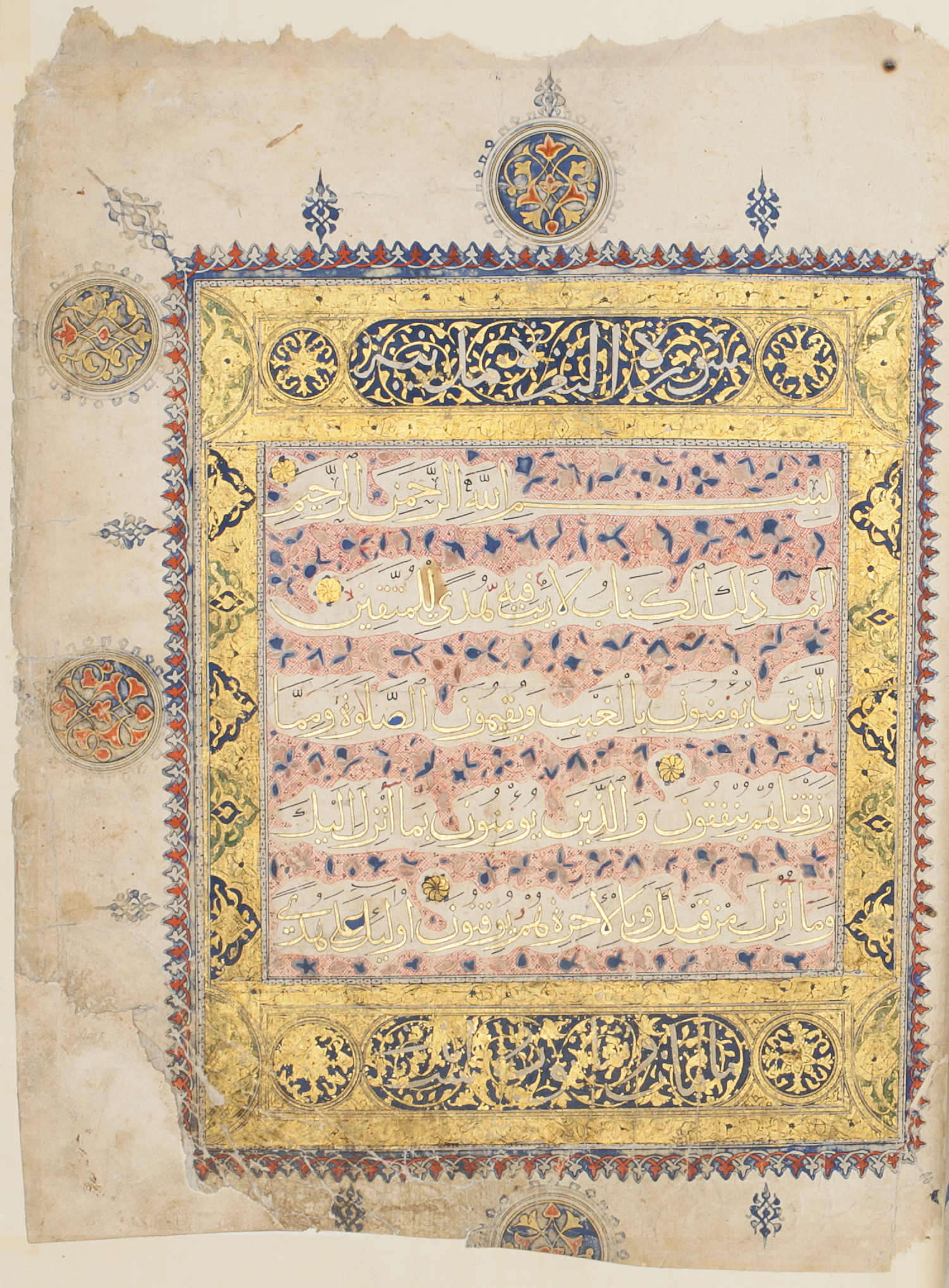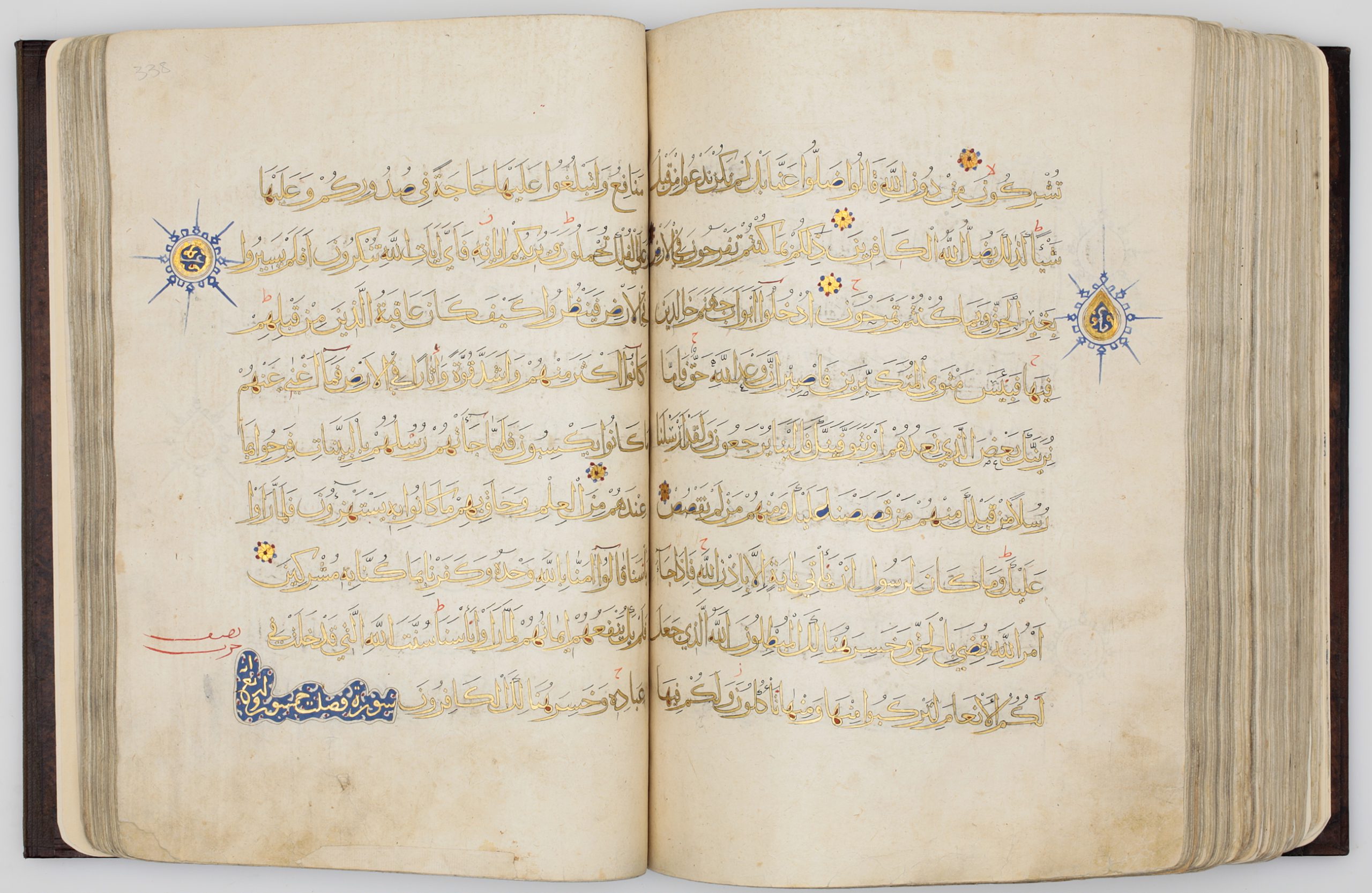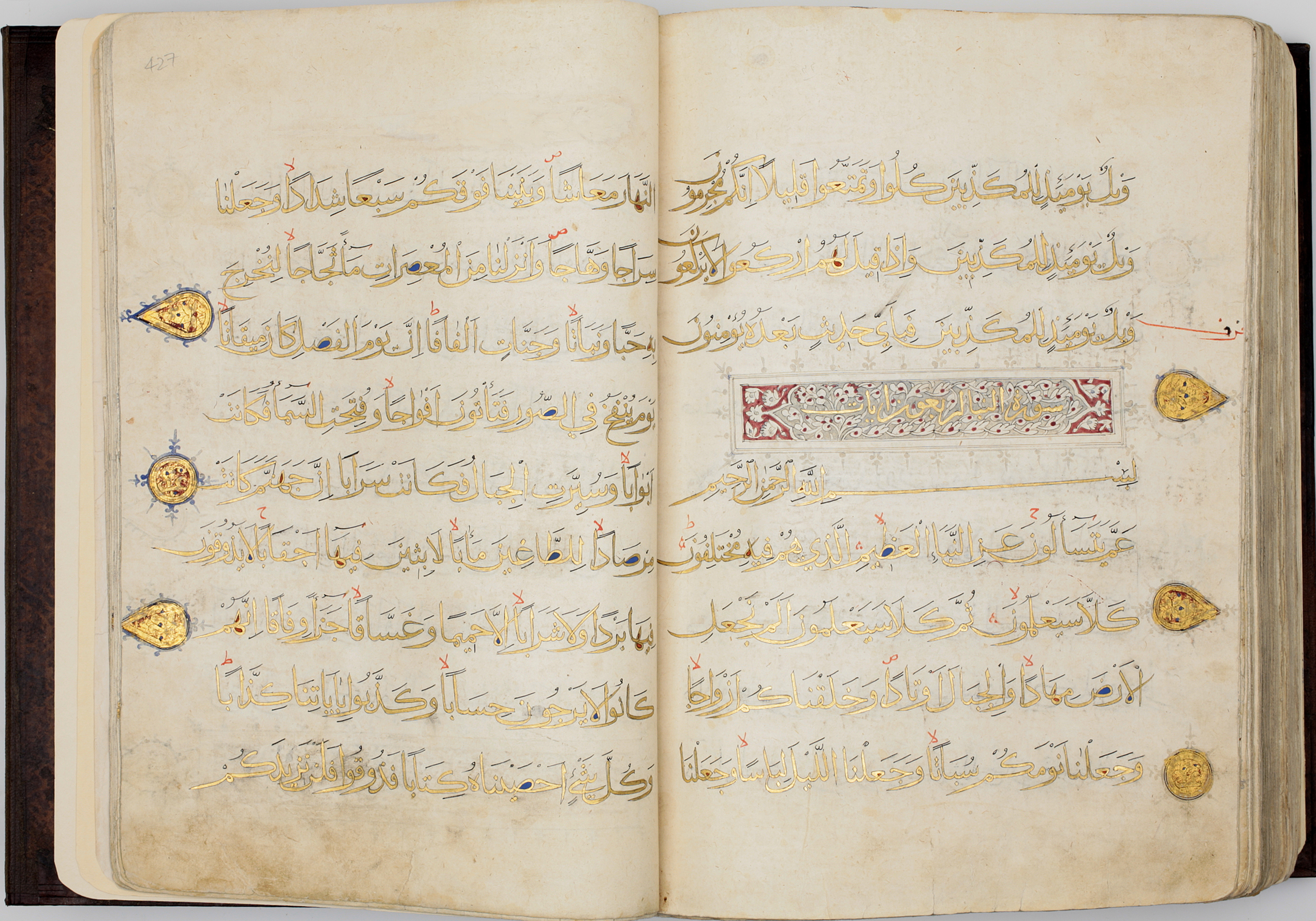 Print Page
Print Page
 Print Page
Print Page
Location: Egypt, probably Cairo
Materials: ink, gold and opaque watercolour on paper; contemporary blind-tooled morocco covers, set into a modern binding
Dimensions: 444 folios; 43.1 x 30.6cm
Accession Number: QUR 595
Other Notes:
The Qur’an bears the signature of Ahmad ibn ‘Ali al-‘Ajami, who also states that he was its illuminator. The nisbah al-‘Ajami suggests that he may have been of central or eastern Anatolian origin: under the Mamluks, the mosque of al-Azhar in Cairo was the foremost educational institution of Islam and attracted scholars from all over the Islamic world. The frontispiece is a careful copy of a celebrated Qur’an made around 1369–72 for the Mamluk amir Arghunshah al-Ashrafi (Cairo, National Library, ms no 54). The boldly designed strapwork interlace is a feature of Mamluk decorative arts of the period.
The text is in a muhaqqaq hand tending towards the naskh. It is written in gold outlined in black. Verses are punctuated by gold rosettes and groups of ten verses are marked by medallions with the words ‘ashr (‘ten’). Groups of five verses are also marked.
Script:
copied in muhaqqaq script, incidentals in thulth; 9 lines to the page
Bibliography:
D. James, The Master Scribes. Qur’ans of the 10th to 14th Centuries AD, The Nasser D. Khalili Collection of Islamic Art, volume II, London 1992, cat.47, pp.190–93.
J.M. Rogers, The Arts of Islam. Masterpieces from the Khalili Collection, London 2010, cat.179, pp.154–5.



